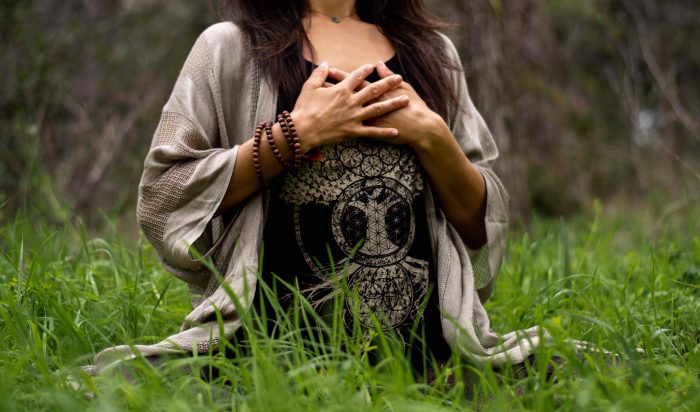I had written this essay as part of my advanced Yoga teacher training in India years ago. Having dealt with depression on and off for years and finding remedy with Yoga, this topic is very important to me making this resource timeless.
May is Mental Health Awareness Month. Data from the NAMI (National Alliance on Mental Illness) states that 1 in 5 U.S. adults experience mental illness each year. Also, people with depression have a 40% higher risk of developing cardiovascular and metabolic diseases than the general population. Lastly, depression is the leading cause of disability worldwide. If you have experience with depression or know someone who does, I hope you find value in this post and share it to spread awareness. Together we can help remove any stigma or taboo on this topic and help spread glimmer of hope to those who need it the most.
~ ~ ~
Depression is a health condition caused by a chemical imbalance in the brain. It can trigger dis-ease and discomfort in the body and mind, ranging from mild or seasonal occurrence to a clinically diagnosed major scale. Symptoms of depression can be hard to notice from an outside perspective but signs to look for can include constant sadness, fatigue, anxiety, difficulty concentrating, restlessness, irritability and excessive crying.
Living with depression, even on a minor scale, can be quite challenging and immobilizing. However, there are many resources for treatment, and Yoga is a great one. A well-balanced Yoga practice helps strengthen the body, which addresses fatigue. With continuous practice, a person suffering from depression can start to feel more comfortable in his or her own skin which helps build confidence. Inward reflection during a Yoga practice can help with sadness. It is important that the teacher emphasizes that it is normal to feel emotions and think unusual thoughts that may arise during a Yoga practice. This may result in a release of emotions therefore, being present and supportive as a teacher is as important as simply holding space. Finding a supportive Yoga community to connect with can address anxiety and increase sense of belonging and worth. Meditation can also help one suffering from depression by providing an opportunity for groundings, lightness, and relaxation.
During meditation, the goal can be to focus the mind on the breath, distracting it from any obsessive and possibly negative thoughts that are common for those suffering from depression. Yoga can become a meditative flow by focusing on the breath during the entire practice. The breath can be slowed down and in combination with Yoga poses, it can help condition the body accordingly with the ultimate goal being the relaxation of the mind. The long-term practice of Yoga and meditation combined can truly make a positive difference in a person living with depression without side effects.
There are certain Yoga poses that can best help someone experiencing depression. Such poses are ones that address the opening of the heart and chest area, which is a main physical point of introversion – most often to a dark mental place – for those suffering from depression. Some of the heart-opening poses that can help in this case are the following:
- Cat-Cow spine stretched and elongations (Bitilasana-Marjaryasana)
- Sphinx / Cobra / Upward Facing Dog (Salamba Bhujangasana / Bhujangasana / Urdhva Mukha Svanasana)
- Reclined bound angle (Supta Baddha Konasana)
- Bridge / Bow for experienced Yoga practitioners (Setu Bandha Sarvangasana / Dhanurasana)
- Wild Thing (Camatkarasana)
- Stargazer (Parighasana variation)
Heart-opening poses improve circulation oxygenating the body and brain promoting vitality. In addition to heart-opening poses, core-strengthening and balancing poses can help someone with depression by promoting strength, confidence and balance. Some suggested poses are:
- Boat (Navasana)
- Chair (Utkatasana)
- Warrior 1, 2, 3 (Virabhadrasana)
- Lunges, Crescent and Low (Anjaneyasana)
- Extended Side Angle (Utthita Parsvakonasana)
On the flip side, poses to be avoided by those suffering from depression, and especially if he or she is new to Yoga in general, would be more challenging poses such as advance balance poses and balancing inversions. The reason behind this is the subject of confidence and self-worth. People who suffer from depression tend to have low self-esteem and not being able to achieve such poses can discourage them and push them further into their depressive state. Similarly, hip openers can be introduced further on into the practice, or once a regular practice routine has been established. This way the practitioner knows to expect and understands that such poses can trigger unexpected emotions to come up and that is completely fine and know how to deal with them without negatively impacting his or her mental state.
Props can provide great support for people with depression in both active and restorative Yoga styles. During an active class, utilizing straps and blocks to help achieve the pose deeper can provide a sense of accomplishment and confidence. Likewise, utilizing bolsters, blankets and eye pillows during a restorative class can provide a sense of support and security helping the practitioner let go of restlessness, anxiety and sadness to any degree possible.
Lastly, as a Yoga teacher it is recommended to use generalizing and inclusive language to indirectly address a student experiencing depression so they can feel part of the group. The goal is to be present and focus on the breath in order to find the balance between grounding and lightness. Being available at the beginning and end of class for all students is the best way to be available also for students suffering from depression so they can feel comfortable to come up and connect.
~ ~ ~
For anyone experiencing depression, know that you are not alone and that there are people who care to help. There are many resources available and one of them is SAMHSA’s National Helpline (Substance Abuse and Mental Services Administration) which is a free, confidential, 24/7, 365-day-a-year treatment referral and information service (in English and Spanish) for individuals and families facing mental and/or substance use disorders. Please share with anyone who could use this information. Together we can all make this world a little brighter.












Read 0 comments and reply